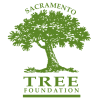Photosynthesis & food chains
All living things need energy to survive. Animals have to hunt or gather food to get the energy they need, but plants can make their own food using light energy from the sun. This process is called photosynthesis, and it takes place in the chloroplasts, tiny green structures found in the green parts of plants.
It is a complicated process, but basically, carbon dioxide and water are converted to glucose (a simple sugar) and oxygen.
In this way, plants make, or produce, the beginnings of most of the food energy on Earth. This is why plants are called producers. They use some of the food energy to carry out their own functions, and store the rest of the energy in their leaves, stems, roots and other parts.
When an animal eats part of a plant, the animal takes the plant’s stored food energy into its body. Creatures that eat food energy are called consumers. Animals that eat plants directly are called primary consumers. Animals that get their food energy by eating other animals are called secondary consumers since the plant’s energy has been consumed a second time. The relationships between producers and consumers can be represented by food chains and webs.
Eventually, all living things die. Then it is time for the decomposers to use the energy. Decomposers break down and take the energy from dead things into their bodies. They also enrich the soil, which helps plants to grow and create more food energy for all of us.

